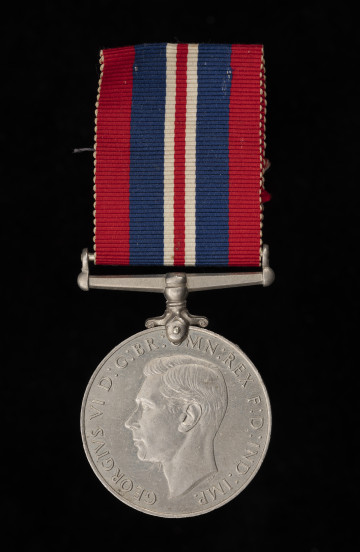
Commemorative Medal for the War 1918–1921
1928 — 1939
National Museum in Szczecin
Part of the collection: Medals and historical orders
The Great Patriotic War is a term used in Russia and some former communist bloc countries to describe the phase of World War II in which the Soviet Union joined the anti-Hitler coalition. It therefore covers only the years 1941–1945. In the mid-19th century, the term "Patriotic War" was used to describe Russia’s defence during the Napoleonic invasion of 1812. It later also appeared in the context of World War I. The original meaning – war on one’s own territory – was reinterpreted as a war for the homeland, a concept exploited by Soviet propaganda in the 1940s to mobilise the population for active participation in the country’s defence. The term excluded previous Soviet military actions abroad, which suited the USSR, as it officially did not participate in World War II before 22 June 1941. The massive Axis attack on the Soviet Union that began on that date took the Soviets by surprise, forcing them to defend their country and capital at the cost of immense human losses, running into millions. However, Nazi Germany’s engagement on the Eastern Front and the ultimately failed Operation Barbarossa played a decisive role in the Allies’ eventual victory. In recognition of veterans’ wartime efforts, the USSR created a wide range of military and civilian decorations. One example is the Medal for Victory over Germany in the Great Patriotic War 1941–1945, established by decree of the Presidium of the Supreme Soviet of the Soviet Union on 9 May 1945. It was awarded not only to soldiers serving in the Armed Forces of the USSR and civilian personnel who contributed to the defeat of the enemy but also to soldiers of other Allied nations who fought alongside the Soviet Union. The presented medal was donated to the National Museum in Szczecin in 1973 by the local branch of the Union of Fighters for Freedom and Democracy (ZBoWiD). Anna Lew-Machniak
Author / creator
Object type
medal
Technique
embossing
Material
brass
Origin / acquisition method
legal transfer
Creation time / dating
Creation / finding place
Owner
The National Museum in Szczecin
Identification number
Location / status

1928 — 1939
National Museum in Szczecin

after 1945
National Museum in Szczecin

1945 — 1975
National Museum in Szczecin
DISCOVER this TOPIC
National Museum in Lublin
DISCOVER this PATH
Educational path